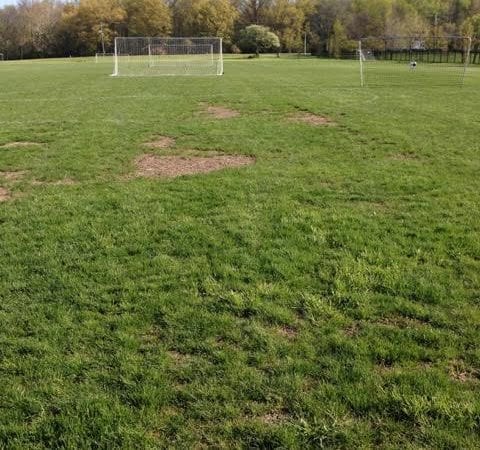Alleviate Turf Wear This Summer Season

Athletic fields are bustling with activity from summer camps, practices, and games. While this is a critical time for athletes to improve their play and for coaches to work with athletes, it can be a challenging time for the turfgrass on the field. The constant traffic can cause turf damage and areas of poor coverage if the field and the traffic are not managed properly.
Sports turf is most susceptible to wear patterns in the middle of the field and goalmouths for soccer and lacrosse fields, between the hash marks for football fields, and anywhere on a practice field where players are doing drills in the same location. For baseball fields, the turf directly in front of the pitching mound, in front of dugouts, in the walk-up area from the dugout, and along the edge between the infield and turfgrass at first and third base are most common areas for wear.
Manage the Traffic
Managing sports turf to keep wear to a minimum can be difficult with multiple events taking place throughout the summer, but it is possible. The first step is to manage the traffic itself:
- Rotate fields
- Rotate drills
- Use multiple fields for events when possible
- Shift field layout so the middle of the field is rotated from side to side, if possible – Consider painting different colored lines for different field layouts
Be sure to work with the players and coaching staff to explain why you are asking them to shift field locations or areas for drills. Most athletes and coaches want a quality surface to train and play on; they may not know there are things they can do to help prevent turf wear and damage.
Maintain the Field
Regular, well-balanced field maintenance is essential, especially during periods of high traffic. In addition to managing the traffic, master these maintenance practices and achieve dense healthy turf, even during periods of high traffic.
- Continually Overseed – Overseeding and pre-germinating seed prior to events and during times of heavy traffic will ensure speedy recovery and germination. TIP – overseed wear areas before you see turf damage. This will build a “seed bank” in the soil.
- Aerify – Increase aerification to relieve compaction and help water movement through the profile. TIP – consider using solid tines during high traffic periods.
- Topdress – Frequent topdressing assists in providing a smooth playing surface while also providing good “seed to soil” contact.
- Irrigate – Make sure irrigation is functioning correctly. Proper irrigation is necessary for conditioning turf to handle and recover from stress caused by heavy use and the harsh environmental conditions of summer. TIP – ALWAYS apply a light irrigation cycle immediately after a practice/game. This will assist in lessening turf damage.







